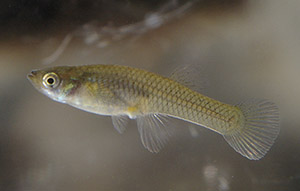
Controlling
Mosquitoes
Around Your Home

Controlling
Mosquitoes
Around Your Home

Controlling
Mosquitoes
Around Your Home
Contents
CONTROL MOSQUITOES WITH THESE ECO-FRIENDLY PRODUCTS
Products containing Bacillus thuringiensis subsp. israelensis (Bti)
Bonide Mosquito Beater WSP (water soluble pouches, formerly Plunks), Summit Mosquito Dunks, Summit Mosquito Bits, Vectobac
Product for making chloramine-treated water safe for fish
Kordon Pond NovAqua Plus
Insect growth regulator
Pre-Strike Mosquito Torpedo
Insect Repellents
With plant oils: Bite Blocker (soybean, coconut, and geranium oils), Repel Lemon Eucalyptus Insect Repellent
With IRD3535: Avon Skin So Soft, Jungle Formula Outdoor & Camping Spray Insect Repellent
With DEET: OFF!
With picaridin: Sawyer Picaridin Insect Repellent
There are many different kinds of mosquitoes. Some bite during the day, while others feed at night. Only adult female mosquitoes bite humans and other animals — they need blood to produce eggs. Both male and female adult mosquitoes feed on plant nectar for energy. Young mosquitoes (larvae) live in water and feed on microorganisms and organic matter. Just about any area or container that holds water for more than a few days can produce a large crop of mosquitoes. Your bites may be coming from mosquitoes you are raising in your own backyard.
 Mosquitoes are part of the aquatic ecosystem, providing food for fish and other aquatic creatures. For humans, however, it’s a different story. In addition to their annoying buzzing and itchy bites, mosquitoes carry diseases that can be serious, even fatal, to humans, like West Nile virus. Getting rid of mosquitoes and making sure they aren’t breeding around your home will help keep everyone safer—and keep you and your family from getting bitten.
Mosquitoes are part of the aquatic ecosystem, providing food for fish and other aquatic creatures. For humans, however, it’s a different story. In addition to their annoying buzzing and itchy bites, mosquitoes carry diseases that can be serious, even fatal, to humans, like West Nile virus. Getting rid of mosquitoes and making sure they aren’t breeding around your home will help keep everyone safer—and keep you and your family from getting bitten.
Follow the tips in this fact sheet to reduce the number of mosquitoes in your area. Only certified vector control technicians are permitted to apply mosquito control pesticides so that effects on other insects are minimized.
Do not treat street gutters or storm drains with pesticides. Storm drains are connected directly to the Bay, and pesticides cause serious problems for aquatic life. Call your mosquito and vector control district if you suspect mosquitoes are breeding in the storm drains or catch basins in your neighborhood. To find your local district, go to:
MOSQUITOFISH
You can get free mosquitofish (Gambusia affinis) from your county mosquito and vector control district (www.mvcac.org). Mosquitofish are non-native predators of mosquito larvae and can be helpful in controlling mosquitoes in a backyard pond, pool, or water garden. Unfortunately, they also feed on several threatened and endangered species in Western states so they must NEVER be released into a creek, stream, or any place that might overflow to a creek or stream.


Unfortunately, they also feed on several threatened and endangered species in Western states so they must NEVER be released into a creek, stream, or any place that might overflow to a creek or stream.
Less than three inches long when fully grown, mosquitofish commonly eat three times their weight in mosquito larvae a day. Their diet also includes zooplankton, beetles, mayflies, caddisflies, mites, and other invertebrates. In fact, too many mosquitofish can make a mosquito problem worse by eating other mosquito predators.
- Mosquitofish are cannibalistic. Protect young fish in a backyard pond by providing rocks and plants for them to hide in.
- Do not feed mosquitofish. Overfed fish may not feed on mosquitoes, and extra food in the water may cause the growth of bacteria that harm the fish.
- Be sure to check with your water supplier before using tap water to fill your pond. Some tap water contains chloramine, which is toxic to mosquitofish. You must treat it first with a product that removes chlorine and chloramine, available in pet stores.
- Do not release mosquitofish into creeks or streams.
Take Away Their Breeding Places
Mosquitoes can breed in any amount of standing water.
- Make sure there is no standing water in containers around your home, including water in cans, plastic containers, potted plant saucers, buckets, garbage cans or lids, barrels, wheelbarrows, or any container that holds water for more than a few days. Empty the water and then either turn over, cover, and throw away or recycle containers.
- Change water in birdbaths and outdoor pet water dishes every two or three days.
- Fix leaky outdoor faucets and sprinklers, and don’t overwater your yard.
 Recycle tires or store them so they will not collect water. Tires are difficult to drain, and each one can produce thousands of mosquitoes.
Recycle tires or store them so they will not collect water. Tires are difficult to drain, and each one can produce thousands of mosquitoes.- Keep roof gutters clean so water drains. Mosquitoes can breed on wet leaves in standing water.
- Don’t dump yard waste into street gutters, storm drains, or creeks. Mosquitoes can breed in clogged gutters and drains, and in stagnant water in creeks. Decaying organic matter then provides food for large numbers of mosquito larvae.
- Drain plastic wading pools or cover them tightly so mosquitoes won’t breed there.
- Drain fountains when they are not recirculating water. If the fountain is large enough, stock it with mosquitofish.
- Keep swimming pool and hot tub filters running. When not in use for extended periods, cover pools and tubs tightly or dechlorinate and stock with mosquitofish. One pool or hot tub left to stagnate can breed enough mosquitoes to bother a whole neighborhood.
- Fill tree holes with expanding foam used for insulation. The western tree hole mosquito is the primary vector of canine heartworm in this area. Keep your dog’s heartworm medicine up to date.
- Clean up leaf piles and plant cuttings that trap water from rain or watering.
Protect Yourself and Your Family from Mosquito Bites
 Install screens on windows and doors and patch any holes.
Install screens on windows and doors and patch any holes.- Use a screen tent for outdoor eating (it will keep out yellowjackets, too).
- Some kinds of mosquitoes are attracted to light. Keep outside lighting to a minimum near entry doors, and keep those doors screened or close them at sunset.
- Wear long sleeves and long pants when mosquitoes are biting.
- Use insect repellents, and reapply every 3-4 hours:
The Centers for Disease Control and Prevention recommend the following active ingredients in repellents. These are all registered by the US Environmental Protection Agency as safe and effective when applied according to label instructions:
- DEET (N,N-Diethyl-meta-toluamide or diethyltoluamide)
- Picaridin
- IR3535
- Oil of eucalyptus and p-Menthane-3,8-diol (based on the oil of lemon eucalyptus)
- Bite Blocker (soybean, coconut, and geranium oils; in a study, compared favorably with 6.65 percent DEET for 3.5 hours).
Mosquito Traps, Bug Zappers, and Other Non-Effective Controls
- Propane-powered traps are not recommended by the American Mosquito Control Association. Although they attract mosquitoes with carbon dioxide and heat, they do not reduce the chance of being bitten. These devices can be very expensive and they only remove adult mosquitoes. Energy and money would be better spent reducing breeding habitat and buying products containing Bti, which are more effective. (See Less-Toxic Controls, at right.)
- Don’t use electric bug zappers—they kill far more beneficial and neutral insects than mosquitoes. Ultrasonic devices are also not effective.
- Wristbands treated with insect repellent are not effective, because repellents protect only areas very close to where they are applied.
- Products containing plant oils such as citronella have been found to provide little if any protection.
- Chlorine does not kill mosquitoes.
Less-toxic Controls
The products described below can be used in ponds and water gardens, birdbaths, fountains, pools, tree holes, and other standing water where mosquitoes lay eggs. Apply in the spring when mosquito larvae are first seen and continue as recommended on the package.
- Bacillus thuringiensis subsp. israelensis (Bti) is the active ingredient in a number of mosquito control products (Mosquito Dunks, Mosquito Bits, Vectobac) that are used in water. It kills only mosquitoes, black flies, and some midges, and does not harm other aquatic animals. Follow all label directions carefully.
- Methoprene is an insect growth regulator that interferes with the normal development of mosquitoes. Drop tablets into ornamental ponds, fountains, or other water features that do not drain to streets, storm drains, or creeks.
West Nile Virus
West Nile virus (WNV) is carried by mosquitoes and by wild birds—especially crows, ravens, jays, and magpies—that have been bitten by mosquitoes. In humans, WNV can be serious or even fatal, although many people who are infected do not develop symptoms.
Some people with WNV will have mild flu-like symptoms (fever, headache, body aches, nausea, vomiting, and sometimes swollen lymph glands or a skin rash on the chest, stomach and back) that last for just a few days. People with mild symptoms usually get better on their own. If you have severe WNV symptoms, such as very bad headaches or confusion, seek medical attention immediately. If you are pregnant or breastfeeding and think you might have WNV, talk to your doctor.
If you find a dead bird—particularly a crow, raven, jay, magpie, sparrow, finch, or raptor—do not pick it up with your bare hands. File an online report about the bird at http://www.westnile.ca.gov or call toll-free 1-877-968-2473. Dead bird reports are important because they are usually the first indication that the virus is active in an area.
For more WNV information, go to http://www.westnile.ca.gov.
Contact your local mosquito and vector control district (www.mvcac.org/resources/member-agencies) if there is an uncontrolled mosquito source in your neighborhood, such as an abandoned pond or pool; or if you need assistance with a mosquito problem on your property. Most district services are provided free of charge.
Don't Let Mosquitoes Breed Around Your Home


